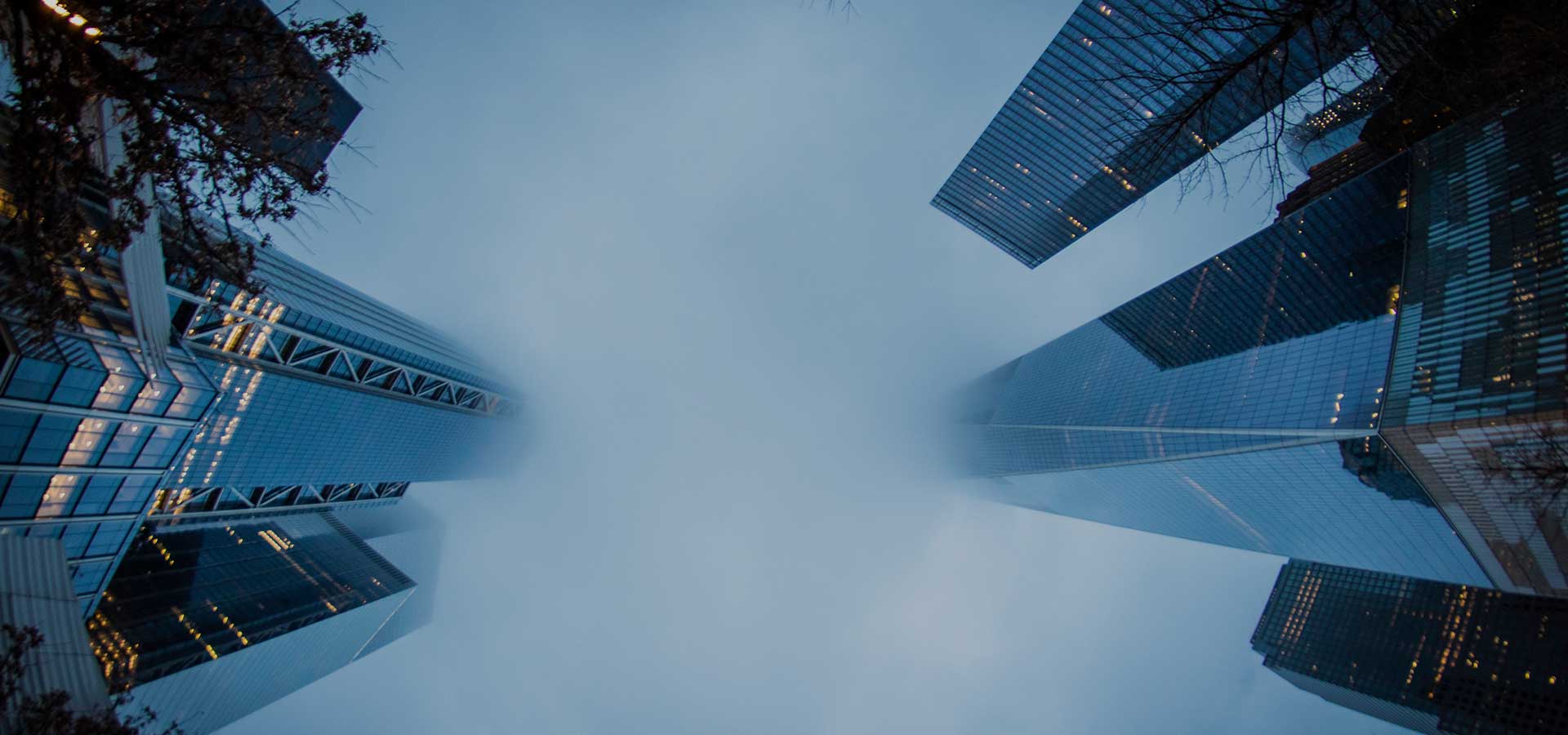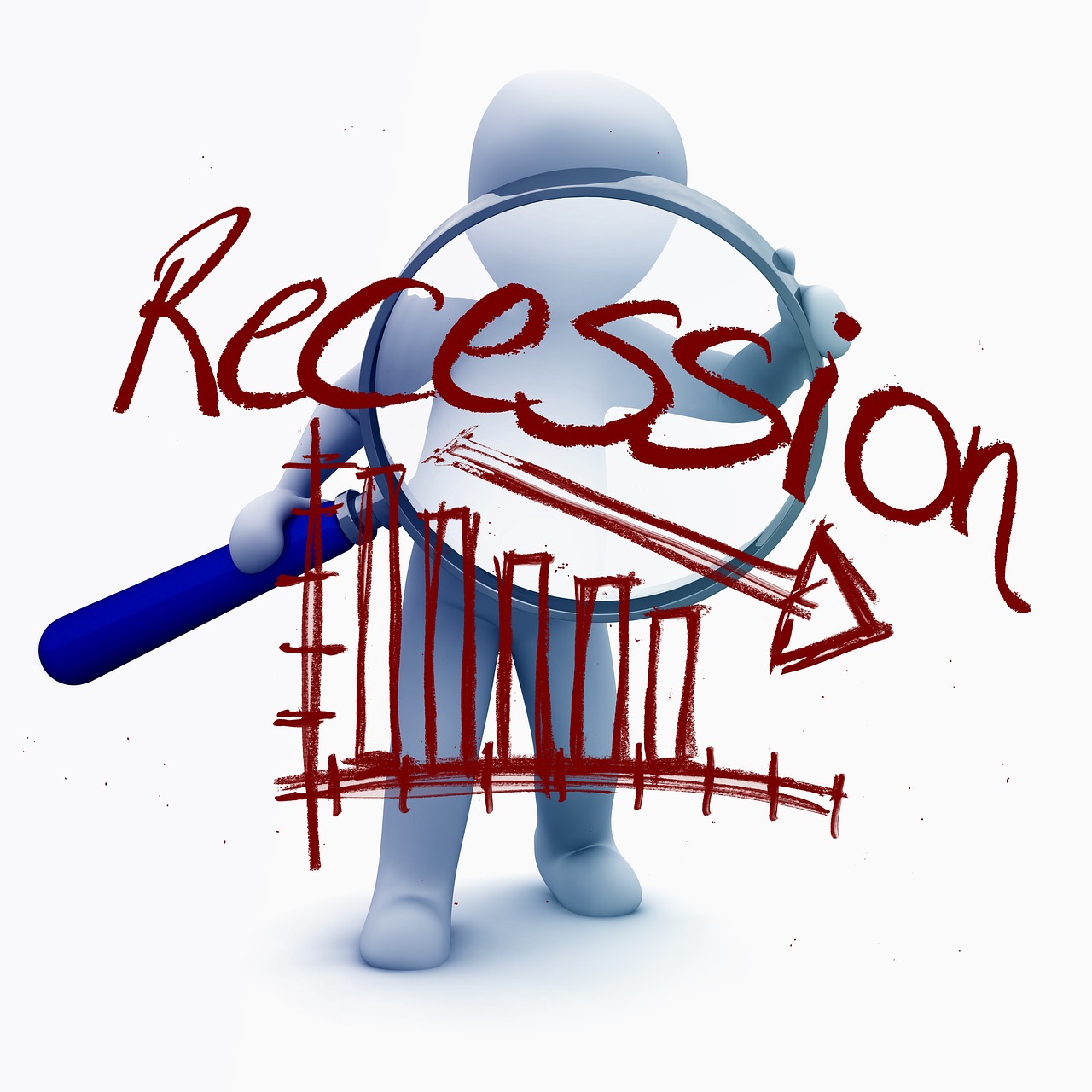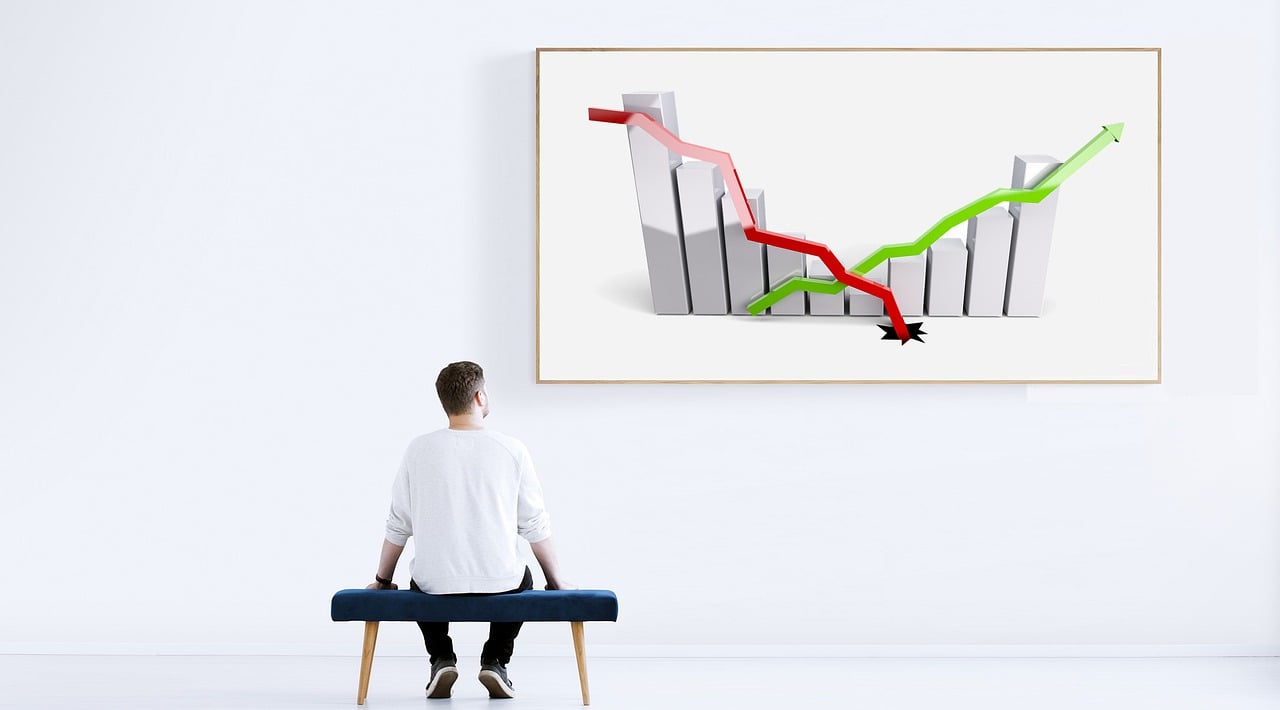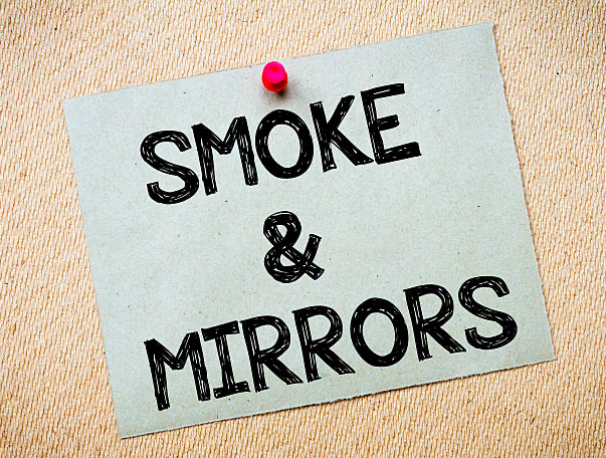Throughout 2023 the scary “R” word floated through the halls of Wall Street like a distant memory from the past. The mere idea of a repeat of 2008, or worse 2020, left many investors on edge. With the 2022 market meltdown on their heels, investors were nervous if “The Big Bad R” was lurking around the corner.
As 2023 muscled on, and the stock markets rallied, the fear inevitably subsided and was soon replaced with the notion the worst was behind us. One positive headline after another (i.e. Q3 GDP of 4.9%, inflation hitting new lows, the Fed Pause, and rate cuts on the horizon) led many to jump for joy “The Big Bad R” had been defeated without any material damage to the economy.
In an ideal world, that would probably be true and the fairytale would have come to an end. Everyone would return to their jobs, homes, and lives with a renewed sense of purpose, passion, and hope for the future. But as many of us know, every horror story always has one last scene where the monster returns and the wake of devastation is felt far and wide…
This is why, based on our depth of research, we believe “The Big Bad R” is not only lurking in the shadows but will soon make an appearance… an appearance that will be felt for years to come.
But before we dive into the weeds with facts, figures, and forecasts let’s set the stage for why, how, and possibly when The Big Bad Recession will rear its ugly head and wreak havoc on the US economy.
Let’s begin our story with the time tested indicators of a recession and why these indicators are ripe for spilling over.
Until now economists, analysts, and pundits have relied on a combination of indicators that, historically, have foreshadowed, and eventually confirmed, an impending recession. Indicators like:
- Volatility (VIX)
- Inverted 10 YR / 2 YR or 10YR / 3 Mon Yield Curve
- The Federal Reserve’s Recession Probability Model
- Industrial Output (i.e. ISM Manufacturing)
- The Sahm Recession Indicator
- Unemployment
- Leading Economic Indicator Index
- Shiller PE Ratio
- US Market Cap over GDP
- GDP Expansion or Contraction
- Household Spending
- Corporate Earnings / Profits
- Inflation Expectations / Fed Dot Plot
- Real Wages
- Housing Starts
- The Stock Market Performance
- High Yield Bond Spreads
- Tobin Q
If you think that is a lot, you’d be right… but there are also many more. To save you the agony of listing out another dozen, or so, I sum it up with, many of the remaining indicators are specific to a subset of factors like small businesses, the health of the consumer, and energy prices. Add in geopolitical events or trade/supply disruptions and the forecasting possibilities are endless. However, if we stick with the indicators that have historically been the most accurate to forecasting a recession we are left with about a dozen. It’s these dozen that tells a compelling story for why a recession is not behind us – but rather staring us right in the face.
For over 70 years the most accurate, and time tested, recession indicator has been the inverted yield curve. If you are not familiar with this metric then let me explain.
A traditional yield takes the shape of an upward sloping curve with the shortest maturities being the lowest yield, or return, and the longest maturities having the highest yield. The yield curve slopes upward and tends to bend in the two to five year time period before leveling out between the seven to thirty year time periods. The further out on their yield curve you go the more an investor is compensated for the risk of holding longer maturity assets – this is also known as “term premium”. While there is no perfect math for what the yield curve’s correct term premium should be it is widely accepted that the premium paid to invest into the future should greater than what is received on the front of the curve.
Unlike a traditional yield curve, an inverted yield curve looks like an upside down curve. This happens when the short term maturities pay more than the back end maturities. When this happens it causes investors to reduce how much they are willing to invest into the future. Instead they shift more of their money into the present, or shorter dated investments. By doing this companies who seek to fund expansion efforts have a difficult time finding investors to invest, or purchase bonds, in the future. The only way to attract investors toward the backend of the curve is to offer a higher yield. For example, if a company wants to issue debt, or bonds, for a 10 year period and the 10 year Treasury pays 4.25% today the company will need to offer a yield above the perceived “risk free rate” of the government Treasury in order to lure the investors from the front of the curve to the back of the curve.
As more and more companies issue more and more debt investors usually seek higher returns for higher risks. However, it is important to note that companies like Apple or Microsoft may be viewed by investors as fairly safe which could mean they may only need to offer a slightly higher yield than what the Treasury market currently offers. On the other hand, small or mid-sized companies that need to focus on growth, who may be viewed as riskier in the eyes of investors, tend to offer much higher rates. Unfortunately, for a company that has an annual growth rate of 15% to 20% (which is considered about average for many small to mid-sized companies) issuing new debt with an interest rate of 10% – 15% does not leave much for reinvestment of profits. This tends to stifle future growth and weighs on the success of these companies. In turn these companies tend to look for ways to cut costs – like labor.
Before jumping to output and labor, let’s wrap this section up by turning our attention to the Federal Reserve’s Recession Probability Model. “This model uses the slope of the yield curve, or “term spread,” to calculate the probability of a recession in the United States twelve months ahead. Here, the term spread is defined as the difference between 10-year and 3-month Treasury rates.” As illustrated in the graph, the steeper the inversion the higher the probability for recession. Based on the recent inversion the recession probability started to climb throughout 2023 only to peak at a 71% chance in May 2024 (which is a couple months away). While the probability has declined a little, due to the inversion normalizing a little late last year, it has remained above 50% through the start of 2025. The linked chart above shows this probability level was last seen in the economic crash of the early 1980’s. To hammer this point home, every recession since the early 80’s did not reach the level of conviction as the Federal Reserve’s Recession Probability Model has now…
Now let’s turn our attention to ISM Manufacturing, the Sahm Recession Indicator, and the unemployment rate. When companies are slow to grow, or are slow to invest in their future, they are slow to produce goods to meet demand. More simply stated, they do not have the capital to meet demand. As illustrated in the ISM data, manufacturing has remained in contraction territory (below 50) since October 2022. This would challenge the belief that the recent 18 month market rebound is in fact an economic recovery. For example, at the trough of the COVID crash the ISM bottomed around 42 before surging to around 65 in March of 2021. By December of 2021, before the 2022 market crash and FED rate hike frenzy, the ISM dropped to approximately 59. Unfortunately, it has only declined from there where it stands at approximately 48 as of February 2024.
To help aid growth companies look to free up cash flow. This free cash flow is then invested within the business, in the highest ROI opportunities. However, to cut costs in a material way labor tends to be one of the big items on the chopping block. With labor cost accounting for up to 70% of a business’s costs, it’s no wonder why managing that budget is delicate balancing act between trimming down, or cutting off, the blood supply. Since labor can be viewed as the lifeblood of an organization it is important to know when there is excess, and when there is nothing left, to cut.
The Sahm Recession Indicator and the unemployment rates are directly linked to the decisions businesses make with respect to labor. For those unfamiliar with the Sahm Recession Indicator, it was created by Claudia Sahm during her time as a former Federal Reserve economist. In her research of the US economy Claudia uncovered a correlation between the speed at which layoffs happen and recessions occur. “The Sahm Rule signals the start of a recession when the three-month moving average of the national unemployment rate rises by 0.50 percentage points or more relative to its low during the previous 12 months.” Between April 2023 and October 2023 the Sahm increased from 0.00 to 0.33. While it came down between November 2023 and January 2024 it has begun to increase again. Should unemployment jump to 4.3% or higher over the coming months the Sahm could exceed the 0.50 increase level thus foreshadowing an impending recession.
Along a similar vein, as illustrated by the Federal Reserve, for the past 70 years the unemployment rate has never consistently stayed level. The rate rises and falls as economic cycles rise and fall. Unfortunately, as indicated in the list above, every time the unemployment rate “bottomed” to its cycle low a recession ensued in the months thereafter. Of the last twelve recessions the unemployment rate bottomed within a year and a half of the recession starting. In this cycle the unemployment rate bottomed in January 2023.
Let’s shift gears and connect the recession indicators to the hypothetical market bubble we are in. The goal is to showcase the two are interlinked and how a recession will lead to the bursting of the bubble, or vice versa.
I noted above that the stock market’s performance can be considered an indicator for an upcoming recession. In looking back over the last 70 years, and removing the COVID induced recession, the S&P 500 has never had a period of expansion as long as it has had between 2008 and today – without experiencing a natural, or more cyclical, recession. In every business school class I attended I learned that economies go through six stages of a business cycle (i.e. Expansion, Peak, Recession, Depression, Capitulation or Bear Market Trough, and finally Recovery). Think of the cycle as a wave that rises and falls. Between the point of Peak and Recovery you find the elusive Recession. This is when the unprofitable stocks/companies declare bankruptcy, the ugliness and angst of investors are shaken off, and the recovery, or healing, ensues. The recession is eventually confirmed by The National Bureau of Economic Research (NBER) when they verify there were two back to back quarters of negative GDP.
In the last 16 years, since the 2008 economic crash, the only confirmed recession was in Q2 of 2020 after the government shut down the economy. Knowing that now makes the 2022 market crash all that more important as it should have led to a confirmed recession and shake out of companies. Instead at the height of despair in October 2022 the market hit an all-time low four months after US economy experience two consecutive quarters of negative GDP (Q1 2022 = -2% & Q2 2022 = -0.6%) AND yet NBER never declared it a recession. They stated the negative GDP print in Q2 2022 could have been interpreted in different ways and instead was view as a “flat” quarter. Why is this important? Well the growth in the stock market that ensued over the following 18 months (to March 2024) either extended an already exhausted economic cycle OR was the start of a new cycle. Both scenarios impact investing methodologies…
To know if the recent AI bull market rally is in fact a new economic recovery we simply need to turn to the standard definition of a Recovery, as it relates to a business cycle. “In this phase, there is a turnaround in the economy, and it begins to recover from the negative growth rate. Demand starts to pick up due to low prices and, consequently, supply begins to increase. The population develops a positive attitude towards investment and employment and production starts increasing. Employment begins to rise and, due to accumulated cash balances with the bankers, lending also shows positive signals. In this phase, depreciated capital is replaced, leading to new investments in the production process. Recovery continues until the economy returns to steady growth levels.” Unfortunately, by the end 2022, and throughout 2023, goods prices never bottomed even as supply increased, demand remained fairly level across the economy with pockets of demand experiencing more growth (i.e. travel & leisure), the unemployment rate never spiked – in fact it leveled out at all-time lows, investor confidence did not return to normal as measured by investor sentiment surveys, cash balances didn’t improve as consumers spent through their savings, consumer or business lending did not improve to aid expansion, and new investments were not made – beyond those in AI.
Instead the rally was driven by the belief that AI would drive corporate profits through expansion, cost cutting, and additional growth. Similar to the metaverse gold rush in 2021, AI dominated the airwaves and corporate earnings calls through 2023. However, as the rally becomes “long in the tooth” the speed to enact generative AI has been slow – largely in part because the technology created and used by Nvidia, Open AI, Microsoft, Google, and a few other players has been limited by resources (i.e. human and financial). In fact, where lithium and electricity became the limiting factors for growth in the EV revolution – electricity, production capacity, and available Capex spending are the limiting factors for generative AI adoption.
With every bubble comes an over exuberance in stocks. This is emphasized by the run up in stock valuations – which is commonly defined as a company’s stock price divided by a company’s earnings. Famed economist and market researcher Gary Schiller created a number of market leading indicators that have aided analysts in evaluating the state of an economy. Specifically, the CAPE Ratio – also known as the Schiller PE Ratio – “is a valuation measure that uses real earnings per share (EPS) over a 10-year period to smooth out fluctuations in corporate profits that occur over different periods of a business cycle.” When analyzed over the last 100+ years we find a high correlation between when the economy is overheated and stocks are overvalued. As it stands today there have only been two other times in the last 100+ years where the Schiller PE Ratio was as high, or higher, than where it stands today. The first time was the Dot Com bubble and the second time was the end of 2021, before the market crash of 2022. In fact, the stock market’s Schiller PE today – on a relative basis – exceeds valuations seen in the 1920’s Great Depression and the 2007-2009 Great Recession. But let’s not stop there…
An indicator that has gained momentum over the last couple of decades comes from Warren Buffet. In fact, the Oracle of Omaha has been credited with a number of market analysis indicators that help investors evaluate valuations, trends, buy and sell signals, and more. One of these indicators looks at an economy’s total stock market valuation as compared to that economy’s GDP – other wise known as The Total Market Cap Over GDP. As it stands today (March 29, 2024) the ratio is 189%. The only other time the ratio stood higher was August 2021 at 199%. Prior to that the closest high points were seen in 2018 when the stock market crashed 20% and in 2000 right before the Internet Bubble burst.
But maybe this time is different… maybe this time consumer spending will continue to drive corporate earnings. Let’s look at some of these data points to find out.
In the links provided above, the New York Federal Reserve and Factset paint an interesting story of the health of consumers and corporations. Since consumer spending leads to corporate profits it would be logical to think increased consumer spending will generate higher corporate profits. This was seen across the economy in 2021 as the economy rebounded from the COVID shutdown. However, the same couldn’t be said about 2022 where the broadening ended and instead was isolated to specific industries like travel and leisure.
The same isolated spending was seen throughout 2023 and by the end of 2023 the only industries propping up the broader market was technology and telecom. As noted in the Factset article, “six of the seven “Magnificent 7” companies, in aggregate, are expected to report year-over-year earnings growth of 53.7% for the fourth quarter of 2023. Excluding these six companies, the blended (combines actual and estimated results) earnings decline for the remaining 494 companies in the S&P 500 would be -10.5% for Q4 2023. Overall, the blended earnings decline for the entire S&P 500 for Q4 2023 is -1.4%”. This means if you removed those top six companies from the S&P 500 corporate earnings would have fallen sharply which aligns with the declines in consumer spending provided by the Federal Reserve of New York.
So let’s connect some dots…
Consumer spending across multiple industries in the economy has continued to decline since the peak in 2021. Corporate profits declined in 2022 and throughout 2023 – if you remove the high concentration in a dozen of names. The stock market’s valuation in aggregate, attributed to corporate earnings, has almost retraced to 2021’s highs, but not due to the broader market/economy’s health improving. Instead six companies comprising almost 30% of the S&P 500 and almost 50% of the Nasdaq contributed a proportional amount to the stock market’s PE ratio. If that wasn’t enough, the Tobin Q – another measure used to determine if a market, or investment, is over or under valued – has retraced to the value at the end of 2021 and is less than 10% away from the value seen right before the Dot Com crash.
Finally, let’s bring it all together…
When you combine the AI disruption of the market decline in 2022, the lack of a shake out of zombie companies, excessive government spending with record high levels of debt, the race to create “Skynet”, consumer health deteriorating, small business expansion and hiring declining, geopolitical events that seem to flare up more frequently, and recession indicators blinking – if not outright sounding the alarm – it becomes difficult to see a positive outlook for the future. This is not to say there aren’t twinkling lights in the darkness. With earnings in focus quarter after quarter we find stocks with interesting entry points.
For example, when a company misses on revenues or earnings and the stock price drops 10-30% in a matter of days an opportunity to invest becomes available. Keeping with this thought process, when we sold Apple around $178 with more than a 15% gain we quickly realized we left approximately 10% of additional upside on the table. However, since we cannot time the market we were patient. Today we feel content with the decision as Apple trades below where we sold it. There will come a point where we will look for an opportunity to re-enter this position at an attractive level. This is just one example of the many of the positions we either exited before or new positions we are continuing to track.
Unfortunately, with The Big Bad Recession indicators flashing the need to be patient, strategic, and focused on the future is critical. There is a saying “when the market is rallying it takes the escalator up but when it is crashing it takes the elevator down”. I understand that missing out on some of the escalator up may be difficult but the elevator drop would be worse – we just don’t know when it is going to happen. This is why I continue to remain defensively positions in all client portfolios with tactical investments in shorts, defensive stocks, deeply undervalued stocks, short term bonds, some high yield bonds, and strategic long term investments in non-correlated asset classes.
Content in this material is for general information only and not intended to provide specific advice or recommendations for any individual. You cannot invest directly in an index. Asset allocation is no guarantee of risk reduction. Past performance is no guarantee of future results.





